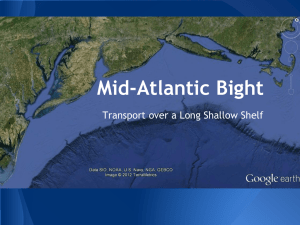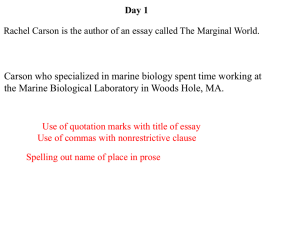Natural Processes Revision
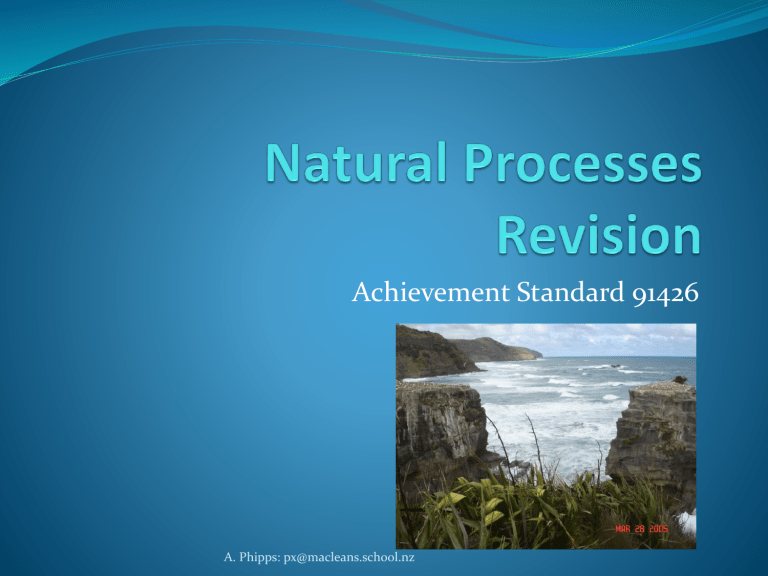
Achievement Standard 91426
A. Phipps: px@macleans.school.nz
How to study for Natural...
1.
2.
3.
4.
5.
Read through your mini Muriwai book – it has soo much info on Muriwai!!
Study as per the revision guide which outlines the assessment areas. Ideas for how to go over the content:
1.
2.
3.
Take notes, or
Draw summarised brainstorms, or
Make summarised tables.
4.
Don’t forget to practise diagrams and maps of MCE & its features.
Once you have revised the content, PRACTISE old exam questions.
EMAIL your practise essays to me to check you’re on the right track.
Practise writing your essays in a time limit (approx
40mins).
1.
Assessment Areas
THE
SIZE
&
EXTENT
OF THE GEOGRAPHIC ENVIRONMENT AND THE
NATURAL FEATURES
OF THIS GEOGRAPHIC ENVIRONMENT
2.
NATURAL PROCESSES THAT
OPERATE
(AND MAY
INTERACT
) IN THE
GEOGRAPHIC ENVIRONMENT
3.
SPATIAL VARIATIONS
: THE DISTRIBUTION AND FORMATION OF THE
NATURAL FEATURES
4.
TEMPORAL VARIATIONS
: CHANGE IN THE OPERATION OF
NATURAL PROCESSES & FEATURES IN THE GEOGPRAPHIC ENVIRONMENT
5.
HUMAN ACTIONS
THAT
MODIFY
NATURAL PROCESSES, AND THE
OUTCOMES
The first thing you’ll need to do in your exam is fill in this is info...
NAME
YOUR CASE STUDY GEOGRAPHIC ENVIRONMENT e.g. Muriwai Coastal Environment
STATE THE SIZE AND EXTENT OF YOUR NAMED GEOGRAPHIC ENVIRONMENT
e.g. Muriwai Coastal Environment is 50km long on the West Coast of
Auckland, extending from Otakamiro Point to South Head. Our study area was the southern 3km of the MCE, from Otakamiro Point to Okiritoto
Stream outlet.
STATE NATURAL PROCESSES OPERATING IN THE GEOGRAPHIC ENVIRONMENT
e.g. Aeolian Erosion, Wave Erosion, Transportation, Deposition, Fluvial
Erosion, Fluvial Transportation, Fluvial Deposition…
STATE DIFFERENT NATURAL FEATURES FOUND IN YOUR GEOGRAPHIC
ENVIRONMENT
e.g. Otakamiro Point, Motutara Island (Stack), Shore Platform, Caves, Dunes,
Spinifex & Marram Grasses
1. THE
SIZE
&
EXTENT,
AND THE
NATURAL
FEATURES
OF THIS GEOGRAPHIC ENVIRONMENT
Muriwai Beach stretches 50km between Otakamiro
Point and South Head on the western coast of
Auckland/Rodney District.
The study area focussed on included the southern most 3km of the coast, from Otakamiro Point to
Okiritoto Stream.
Muriwai Golf course just inland of the dunes
Woodhill Forest is located inland of the northern stretch of the beach.
Muriwai is a highly erosive coastal environment.
1. THE
SIZE
&
EXTENT,
AND THE
NATURAL
FEATURES
OF THIS GEOGRAPHIC ENVIRONMENT
FEATURES
Otakamiro Point (headland)
Motutara Island (stack)
Shore Platform
Caves and arches
Mitiwai Sands – very porous, low fertility & are easily moved by the wind.
Dunes
Marram grasses
Dissipative beach profile
Destructive, high energy waves
Processes operating at MCE
Erosion
Aeolian
Fluvial
Transporation
Aeolian
Fluvial
Deposition
Aeolian
Fluvial
EROSION
Aeolian erosion
- prevailing westerlies & south
westerlies blow over 40% of the time, mostly up to
11knots which is the velocity needed to move the iron sands of the beach when it is dry. (The velocity the wind must be to move sand is called the critical
shear velocity). 70% of the winds blow on shore.
Wave erosion
– MCE is classed as a high-energy coastal system. The typical wave type is ‘destructive’ with wave heights reaching between 1.5m - 3m in normal conditions. Waves are generated from swells in the great
Southern Ocean, and therefore have practically limitless
fetch. During storms the waves are incredibly destructive.
Wave erosion has different effects at different parts of the coastal environment.
Nearshore
Foreshore
Headland
Dunes
TRANSPORTATION
Aeolian transportation
CRITICAL SHEAR VELOCITY / FLUID THRESHOLD
VELOCITY is the speed of the wind which can transport dry sand. This point is 11knots at MCE. this process is evident particularly at the backshore & dunes.
The lee side of the dune is the most protected from wind
Windward side of the dune has the most transportation
Traction, surface creep, saltation, aerial suspension.
Fluvial transportation
Prevailing W and SW winds cause sediment to travel in these directions.
Long Shore drift transporting material away from the headland, most transportation of sediment is away from the dunes, rather than towards.
DEPOSITION
Aeolian Deposition
Occurs on the backshore and dunes when transported sand grains meet resistance (ie; marram grass or spinnifex grass), designed to accumulate the sand.
When the wind drops, particles which have been entrained or saltated may drop.
Fluvial Deposition
Long shore currents deposit sand northwards of the headland.
2. NATURAL PROCESSES THAT OPERATE (AND MAY
INTERACT ) IN THE GEOGRAPHIC ENVIRONMENT.
Revision Activities:
1.
2.
Explain the kind of waves are typical of MCE & how these shape Muriwai’s beach profile.
Draw an annotated diagram to support Question 1.
3.
How does Long Shore Drift operate at MCE and what is its effect?
4.
5.
6.
Draw an annotated diagram to support Question 3.
What processes led to the formation of the dunes at
MCE?
Draw an annotated diagram to support Question 5.
EROSION
Fluvial Erosion at the nearshore:
Bar & Gully forming processes are the result of alongshore currents & rip currents
Incident waves (approach at an angle to the beach) create long shore drift which erodes material from the beach (esp. at the south end!!).
Fluvial Erosion at the fore shore:
Waves at MCE are destructive & spilling
strong backwash
steep waves faces
Water ‘spills’ from the crest down toward the nearshore
<2 degrees beach slope gradient (a dissipative beach)
These wave character tics = EROSION
Fluvial Erosion at the backshore/dunes:
Incident wave (approach at an angle to the shore)
High storm surges
Strong currents
The result = undercutting of the dunes & material being carried back to bars in the near shore.
Particularly during winter months
Long-term erosional phase
Fluvial Erosion at the headland:
Wave refraction & wave attack causes a wave-cut platform & notches.
1.
Salt spray causes weathering of the rocks (this is called
frittering).
Wetting & drying due to changing tides also weathers the rocks, eventually they prise apart.
Hydraulic Action or Quarrying: The constant force of waves crashing on the shore damages it.
2.
3.
Abrasion or Corrosion: Waves bring with them bits of rock and sand. These help to grind down cliffs.
Attrition: Waves cause rocks and pebbles on the shore to smash into each other and break down.
4.
Corrosion or Solution: Weak acids contained in sea water will slowly dissolve certain types of rock.
TRANSPORTATION
Fluvial transportation
Headland max transporation away from the headland toward the beach due to wave refraction & long shore currents due to the SE winds
Backshore there is greatest transportation away from the dune than toward it. This has causes a net loss of over 1m per year of the frontal dune since 1950. (this is a lot of erosion btw).
DEPOSITION
Aeolian deposition:
Dunes : When suspended or saltated sand grains meet resistance on the dunes, such as marram or spinifex grasses, sand will deposit and accumulate. This particularly occurs at the lee of the dunes where it is sheltered & the wind drops -> causing the sand to drop.
Foreshore : Deposition may occur on the foreshore when the wind drops, causing sand particles which are being entrained or saltated to drop.
Fluvial deposition
Headland: Sediment gathers up at the headland in the caves and notches which are mostly sheltered during tidal changes.
Backshore : the nature of waves during summer change to constructive waves causing some deposition of sand. However, as the beach is in a long term
erosional phase any deposition is quickly eroded during winter. (Note: constructive waves during summer at MCE are not effective enough to fully change the beach profile from a winter/dissipative profile).
Temporal variations refer to change over time in the natural environment (MCE).
This includes:
Change in natural processes & natural features, and
Change caused by human modification
However refer only to change in natural processes & natural features, unless it is specified to refer to human modification.
I highly encourage you to familiarise yourself with appropriate diagrams for temporal variations in the
MCE & to be able to explain the changes.
Nearshore temporal variation:
Storms often cause change to rip currents and therefore cause change to bar formations. Following a storm the bars in the nearshore zone migrate toward the land at transverse angles causing complex rip systems.
(Normally the bars are located along the shore, parallel to the land). This change occurs relatively quickly, sometimes within 2 weeks.
(See pages 9 &23 in Muriwai field guide).
Cliff/headland morphology (change) due to wave refraction, hydraulic action, and frittering:
Formation of the stack (Motutara Island)
Formation of the wave cut platform
Formation of the caves & wave cut notches
Backshore the nature of waves during summer change to constructive waves causing some deposition of sand.
However, as the beach is in a long term erosional phase any deposition is quickly eroded during winter. (Note: constructive waves during summer at MCE are not effective enough to fully change the beach profile from a winter/dissipative profile).
See page 24 in Muriwai Field Guide.
Dunes:
Since the 1950’s the frontal part of the dunes have retreated about 50m! – roughly 1 – 1.5m per year in the southern section of the beach. The beach has been in a highly erosional phase since the 1950’s.
Note: sediment supply to MCE is carried northwards from the New Plymouth coastline. The erosional phase of MCE suggests sediment is not being fed in from the south.
A large storm in 2005 severely attacked the dunes causing large-scale blowouts and washovers around the surf tower. (The surf tower had to be removed).
(See pages 19-20, 53-54 in Muriwai Field Guide).
For an extensive timeline of temporal variations caused by human modification see Pages 48-52 in Muriwai
Field Guide
Processes that have been modified
Backshore processes modification (ie; aeolian erosion & deposition)
Earthworks
Mesh sand fences
Marram & spinnifex grasses
Woodhill Forest planting from 1936
Headland process modification (ie; wave refraction & reflection, hydraulic action/corrasion)
Gabion baskets
Sea walls
Boulders
Wooden structures
Relocation of the southern carpark
All human modification to MCE has aimed to minimise the effects of erosion. Modifications may be hard or soft (to work in harmony with the natural environment). The following are modifications that have been put in place:
Boulders and wooden structures to protect the water pipe near the southern car park.
Gabion baskets & boulders at the headland
Sea walls at the headland and below the southern car park
Marram and spinifex plants at the dunes
Mesh sand fences to catch sand at the dunes
Earthworks on the dunes to modify dune dimensions
Relocation of the southern car park.
For each human modification you will need to know
when it was used, why it was used, and how effective the method was. You must also be confident in sketching each method with annotations.
Use your geographical genius to analyse the success and failure of each method.
Refer to pages 43-59 in Muriwai Field Guide for detailed accounts of human mod to MCE.
For past exams & exemplars...
http://www.nzqa.govt.nz/ncea/assessment/search.do?
query=Geography&view=exams&level=03
Email me your practice essays: px@macleans.school.nz
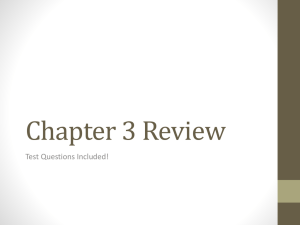
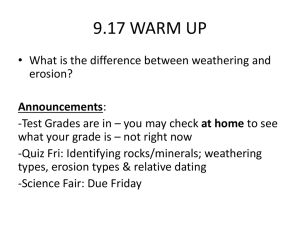


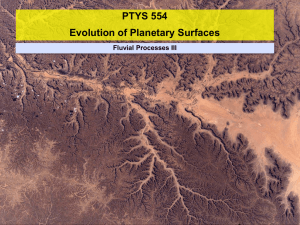

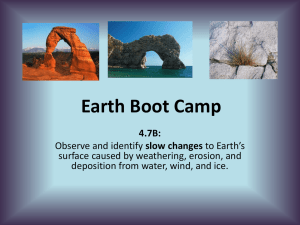
![Kaikoura Human Modification[1]](http://s2.studylib.net/store/data/005232493_1-613091dcc30a5e58ce2aac6bd3fb75dd-300x300.png)


